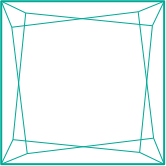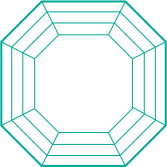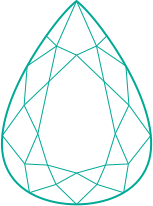FAQ
Yes. Lab-grown diamonds are real diamonds. The chemical composition and optical qualities of lab-grown diamonds are identical to those of mined diamonds.
Even a professional gemologist or diamond technologist cannot tell the difference between a lab-grown diamond and a mined diamond using the naked eye.
To determine the difference, a gemologist will use ultraviolet light to examine the nitrogen clusters found in mined stones.
Mined diamonds take between 1-3 billion years to form naturally within the earth’s crust. They are mined with explosives and large pieces of rock are removed, broken down and sorted through to find diamonds.
Mined diamonds are unique. As they were grown in the earth’s crust, they have many natural variations in colour and clarity.
Despite common misperception, mined diamonds are not as rare as some would have you think.
Though they no longer have exclusive monopoly on the diamond trade, the industry perception and price is very carefully controlled by De Beers in a cartel-style operation designed to keep the price of diamonds high by not flooding the market.
There are also complex issues of illegal blood diamonds (or conflict diamonds) that can end up on the open market. These uncertified diamonds are forcefully mined by those in certain African countries and the profits are used to finance militia operations in war-torn areas that leave many people dead.
This is a major reason why many people are turning their backs on mined diamonds.
Lab-grown diamonds by contrast, are created over the space of weeks, using the same chemical composition as mined diamonds. As they are manufactured in a controlled environment, there are less natural variations.
As they are virtually identical to mined diamonds, they look brilliant and sparkly, just like natural diamonds though they are significantly more affordable.
Yes, lab-grown diamonds are also known as synthetic diamonds. They are synthesised in a lab under controlled conditions using the same chemical composition as mined diamonds.
Lab-grown diamonds are real diamonds, as opposed to fake diamonds like those made out of cubic zirconia which are vastly different on a chemical level.
Cubic zirconia shines in many more colours than a diamond and is much easier for gemologists to identify as fake. As a gemstone, cubic zirconia is virtually worthless.
Diamonds come in a wide variety of shapes and cuts to suit each individual’s tastes and preferences. When choosing a diamond engagement ring or the perfect stone for a piece of jewellery, first select your preferred centerpiece shape.
 |
Round Cut Diamond the most popular shape features a wide crown and pavilion base |
 |
Princess Cut Diamond a modern square cut with many sparkling facets |
 |
Asscher Cut Diamond a stepped square cut designed in 1902, suitable for high quality gems |
 |
Cushion Cut Diamond an antique style oval cut deep with large facets |
 |
Emerald Cut Diamond a concentric rectangular shape with cut corners |
 |
Heart Shape Diamond these romantic diamonds are actually pear shapes with a cleft in the top |
 |
Pear Shape Diamond shaped like a drop of rain and blending the best in oval and marquise cuts |
 |
Oval Shaped Diamond even and symmetrical shape adds flattering length to the hand |
 |
Trilliant Cut Diamond a spectacular geometric wedge, usually with 3 even sides |
 |
Radiant Cut Diamond square or rectangular diamonds combining brilliant and emerald cuts |
The 4 Cs of diamonds are categories that are commonly known to reflect the quality and value of a diamond. Each category uses a grading system. Diamonds with the highest grading are more valuable and hence higher in price.
The 4 Cs of diamonds are:
Clarity: Refers to impurities found on or within a diamond. Mined diamonds generally contain some level of natural trace elements inside or on the surface. These are known as natural flaws or inclusions and are unique to each diamond.
The grading system for clarity ranges from SI2 (slight inclusion 2) up to FL (Flawless).

Carat: The unit of measurement used to identify the weight of a diamond. One carat equals 0.2 grams. The higher the carat, the higher price.

Cut: Diamonds are cut and polished by hand or machine by professional diamond cutters, to reflect and refract light by creating many angles and facets.
The cut of a diamond is graded from fair to super ideal.

Sectification: Although not technically one of the 4 Cs, this 5th C is an important one. Every diamond should come with a certification by an independent, reputable and qualified expert as proof that your diamond has been graded.
A certificate of authenticity is essential if you want to insure and/or resell the diamond at a later stage.
Eco Lab Diamonds offer world standard certification from the International Gemological Institute (IGI).
To choose the right lab-grown diamond from our range, please use our search filter to find a diamond that suits both your budget and your preferences.
When selecting a diamond engagement ring, there are a couple of factors to take into consideration, including:
- Are you buying the ring for your fiancé or are you choosing the ring together?
- What budget are you working with?
We can create the perfect ring for your budget and preferences, so knowing what you want is half the battle.
Selecting a ring shape and setting can be a personal choice, depending on individual preferences. If you’re buying a ring as a surprise before popping the question, it pays to get an idea first of what shape or style your significant other would prefer to wear.
If you’re not sure, perhaps ask a close friend or family member for some help if you don’t know what style to choose, or perhaps subtly ask your partner some questions about their ideal ring style before ring shopping.
At Eco Lab Diamonds, you can browse our comprehensive range of lab-grown diamonds by shape, style, or you can create your own unique lab-grown engagement ring.
Click here to have a look through our stunning range of options and choose from a variety of diamond shapes, ring settings, colours of gold band and ring sizes.
Ring sizes vary from size F to Z+1. Choosing the right ring size is easy if you have an existing ring that fits perfectly.
Simply click here and print out our ring sizing guide. Then follow the instructions to find out the right size.
If you don’t have a ring that fits perfectly, use a string or piece of paper to wrap around your finger and then measure the length as precisely as possible.
The price for a 1-carat lab diamond ranges from around $2500-$4000. As per mined diamonds, the cut, colour and clarity are the main reasons that the price varies.
View our diamond finder here.
With over 20 years of experience in the diamonds industry, Eco Lab Diamonds’ founder Steve Richards is a highly experienced gemologist and diamond technician. Based in Melbourne, Australia, Steve has helped many thousands of people find the right diamonds for the right occasion.
He continues his work exclusively online with Eco Lab Diamonds, selling top quality lab-grown diamonds and jewellery across Australia and internationally.
As purchasing diamonds can be a big decision, we have ensured all the available purchasing information is readily available, including product specs, photos and videos of the products.
Furthermore, all of our jewellery is manufactured using the highest quality materials and is inspected prior to shipment.
We also offer a lifetime guarantee: We will repair and maintain your jewellery for a lifetime.
However, if you are unhappy with your ring for any reason, we offer a no-hassles 30-day returns policy with a 100% money-back guarantee. Click here to find out more.

